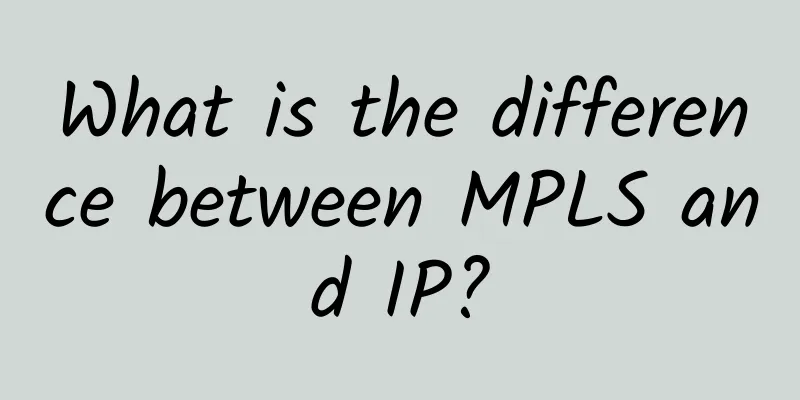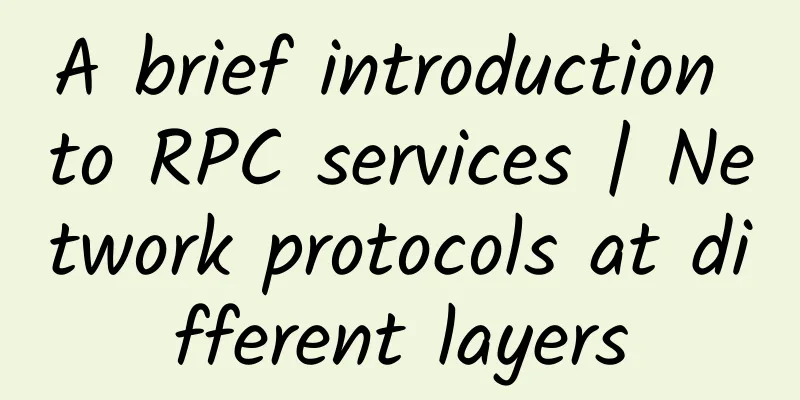What is the difference between MPLS and IP?

|
MPLS VS IP (1) IP forwarding principle: The router checks the destination IP address of the data packet and forwards the data according to the routing table. IP networks forward data according to the IP packet header.
(2) MPLS forwarding principle: The MPLS router (LER LSR) receives the MPLS datagram and forwards the MPLS datagram according to the label forwarding. MPLS Multi-Protocol Label Switching can carry multiple routing protocols. (3) The most basic IP packet header: MPLS packet header structure. Usually, the MPLS header has 32 bits, including:
(4) MPLS Terminology
MPLS forwarding works (1) How to generate label forwarding entries? Note: The label forwarding table is similar to the routing table in the IPv4 network. The router generates a corresponding label for each routing entry and puts the label into the label forwarding table. A mapping relationship (FEC) needs to exist between routers and labels. (2) How to insert the MPLS label header into the IP packet on LER? When a data packet enters the MPLS domain from the IP domain, the LER inserts an MPLS packet header, and the specific label paper is generated according to the label forwarding table. (3) How do routers in an MPLS domain send packets to their destinations? The LSR device exchanges the label in the MPLS packet header according to the label forwarding table. When an IP message enters, the LER device searches the label forwarding table and performs a label operation (PUSH) on the IP message. When the IP message leaves, the labeled message is popped out (POP) and forwarded according to the IP route.
IP forwarding vs MPLS forwarding (1) MPLS forwarding advantages:
(2) MPLS forwarding defects: label survival depends on the IGP protocol and the routing table. |
>>: Is HTTP really that difficult?
Recommend
Computing power network has become a new engine for digital development. How can operators make use of it?
At present, the digital economy has become the to...
Understand the difference between disaster recovery and backup in data centers in three minutes
1. Introduction Sudden failures in data center op...
OSI seven-layer and TCP five-layer protocols, why TCP/IP protocol wins
[[278277]] 1. OSI Reference Model 1. Origin of OS...
The Importance of Switchgear to Data Center Uptime
Among all the electrical and system components th...
Ultra-wideband is no longer a highlight: 10 thoughts on 6G by Wu Hequan, an academician of the Chinese Academy of Engineering
At the Global 6G Technology Conference held recen...
Shenzhou Cloud Technology releases dual-track ultra-high availability architecture to strengthen the foundation of the IT infrastructure
On December 21, 2022, "Architecture Disrupti...
How to determine whether the protocol is Websocket in Http Header
[[398343]] This article is reprinted from the WeC...
RAKsmart cloud server starts from $1.99/month, 30% off, available in US/Hong Kong/Japan/Singapore data centers
Let's pay attention to the information of clo...
The days of exponential growth in 5G capex are over, but the outlook is not bleak
Stefan Pongratz, vice president and analyst at ma...
A 100% timeout murder caused by maxing out the bandwidth!
[[421757]] Verse: Do not advise others to do good...
ACI's "hardcore security" is more eye-catching
[51CTO.com original article] According to market ...
Ministry of Industry and Information Technology: my country has built a total of 1.037 million 5G base stations
5G is one of the topics that all sectors of socie...
A wonderful explanation of the four major communication interfaces: UART/I2C/SPI/1-wire
[[350985]] 1. Qiu Qianzhang's Light Kung Fu F...
4G networks are getting slower and slower? This may be true, but there is absolutely no conspiracy!
[[344211]] This article is reprinted from the WeC...
What kind of report card have we submitted one year after 5G licensing?
Time flies, and in the blink of an eye, it has be...









